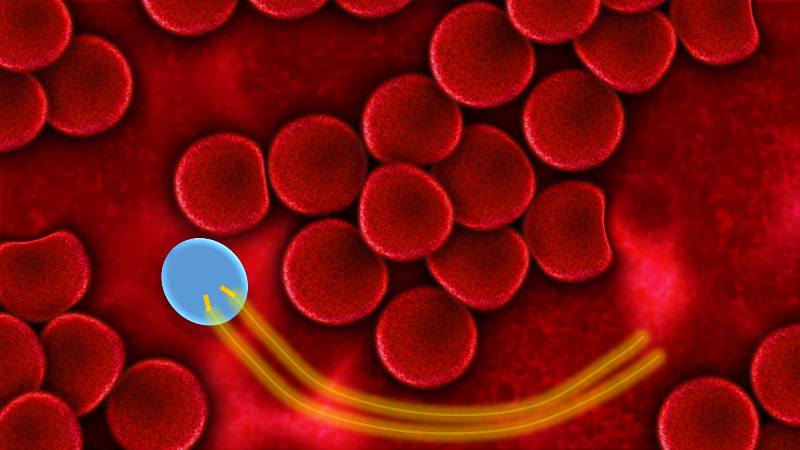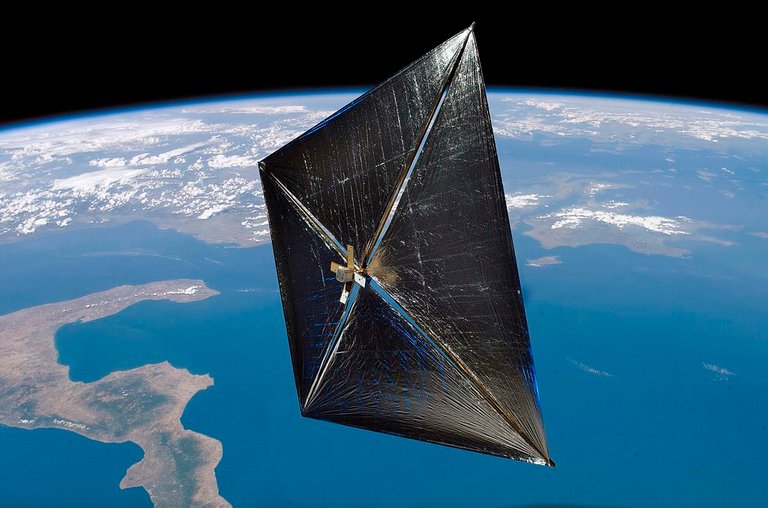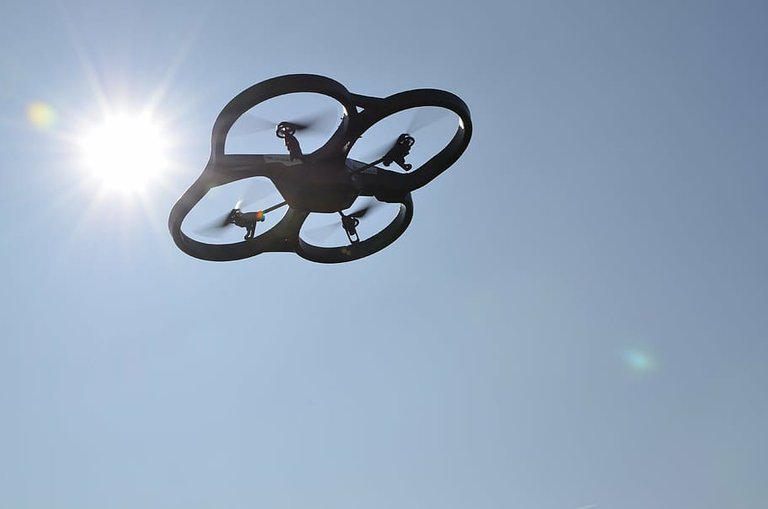Microdrones driven by light
Nano and micro-objects are very difficult to move and steer due to their dimensions, but new proposals for propulsion and manipulation of these objects are emerging all the time. In this regard, physicists at the University of Würzburg have reported to have succeeded in propelling microdrones much smaller than red blood cells using only light.

Representation of a light-driven nanoparticle. Source: image prepared in powerpoint with an image taken from pixabay.com.
When we activate a laser pointer we would not think that the photons of light that make up this beam would be able to move an object, however, when the photons of light interact with matter, forces are produced by the transfer of linear and angular momentum; but these forces are too small to be perceptible by macroscopic objects, but for microscopic objects, which have very small masses, can be significant, making the propulsion of nano and micro-objects by light is something possible.
It has long been known that optical recoil forces can have a very large influence on small objects. For example, the astronomer Johannes Kepler first pointed out in the 17th century that sunlight must generate some kind of pressure on objects in space, something he deduced by observing that the tails of comets always point in the opposite direction to the sun, so he presumed that the sun's light produced some kind of repulsion effect. He was the first to suggest that solar sails could be used to propel spacecraft.
In the field of space technology, prototypes of spacecraft powered by solar sails have been tested for some time now, with the aim of taking advantage of this repulsive force provided by sunlight and propelling spacecraft. For example, NASA successfully deployed a solar sail in orbit for the first time in January 2011 with the NanoSail-D minisatellite, and it is expected that this system will be tested again this year with the launch of the ACS3 mission.

A representation of the NanoSail-D in orbit. Source: Wikipedia.org.
Quadcopter microdrones
Returning to the microscopic world, physicists from the Nano-Optics Group at the University of Würzburg were able to demonstrate that it is possible to effectively propel microscopic-sized objects in an aqueous environment using only light. In addition, they were able to move them over a surface and control their maneuvers in two dimensions, two translational and one rotational.
The microdrones designed by this team consist of a transparent polymer disk of 2 μm in diameter and a mass of approximately 2 pg. In this disk there are embedded up to four independently steerable chiral plasmonic nanoantennas, which act as nanomotors, similar to a normal quadcopter drone.

The design of microdrones is similar to that of macroscopic multirotor drones. Fuente: piqsels.com.
These nanomotors are metallic nanostructures, whose dimension is smaller than the wavelength of light, which have been optimized to receive circulating polarized light, so they can receive light regardless of the orientation of the microdrone, and the light energy received is then emitted by the motor in a specific direction to generate an optical repulsive force according to the direction of rotation of the polarization, clockwise or counterclockwise, and according to the wavelength. And thanks to the small mass of the drones, they can be moved and maneuvered by this force.
Through this approach, the microdrones could be maneuvered by adjusting only the optical power of each motor, which is why the fabrication of the nanomotors is crucial to the operation of the microdrones. For their fabrication, accelerated helium ions were used to cut the nanostructures from single-crystal gold, and the body of the tiny drone was fabricated by electron beam lithography. This procedure and the results of this work were presented by this research team in the journal Nature Nanotechnology.
Now, what is the purpose of developing micro and nano drones, apparently the most immediate applications are observed in the field of medicine, I have found that some nanoparticles that act as drones were employed to remove cholesterol plaques that accumulated in the arteries, as published in an article in the journal Science Translational Medicine in 2015. According to this article, nanoparticles capable of carrying a payload to its target site, in this case, a drug specially designed to combat clogged arteries in mice, were employed.
So, nanoparticles that can act as drones to transport a drug just where it is needed, such as a fatty deposit in the arteries, undoubtedly represents a great use of this type of technology in medical science.
Certainly there is still a long way to go before this type of technology is available for use, but nanotechnology will definitely become the future of medicine, and it is exciting to see how it is developing and approaching even science fiction scenarios.
Thanks for coming by to read friends, I hope you liked the information. See you next time.
I've learned a lot. 🙂
!1UP
You have received a 1UP from @thecuriousfool!
@stem-curatorAnd they will bring !PIZZA 🍕
Learn more about our delegation service to earn daily rewards. Join the family on Discord.
Thank you for your support!
PIZZA Holders sent $PIZZA tips in this post's comments:
@curation-cartel(5/20) tipped @emiliomoron (x1)
You can now send $PIZZA tips in Discord via tip.cc!
Thanks for your contribution to the STEMsocial community. Feel free to join us on discord to get to know the rest of us!
Please consider delegating to the @stemsocial account (85% of the curation rewards are returned).
You may also include @stemsocial as a beneficiary of the rewards of this post to get a stronger support.
Thanks for the support friends!